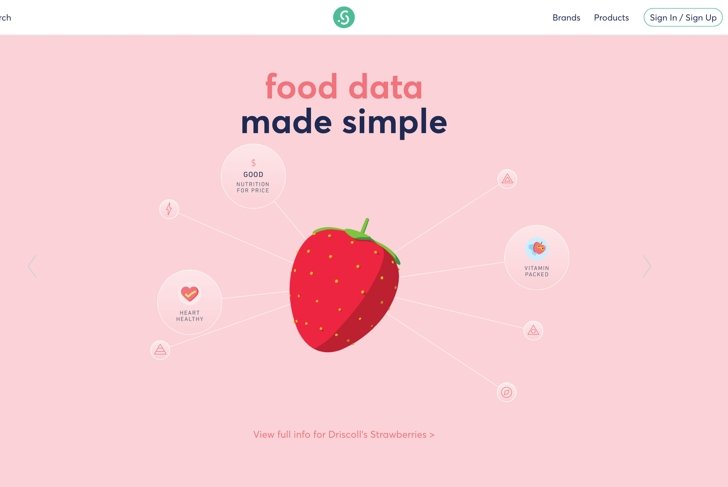
Hungry for more data? The Sage Project is a web-based app that demystifies what\’s written on your food labels.*
*Warning: if you find food puns grating (oops), maybe skim over this article—we’re milking the cheesy wordplay here.
Food labeling is supposed to bring clarity but so rarely does. Sure, a well-informed consumer might be able to glean a few useful nuggets from a product’s label. But what if you’re not perfectly well informed? What if you want specific info, like how a product will affect your diabetes? Or what if you’d like to know just what that weird word in the ingredient list means? It’d be great if food labels could provide information that actually matters to you.
Enter: the Sage Project. The goal of this web-based app is transparency in food labeling. The Sage Project’s friendly approach to data enables users to learn more about their food choices through the lens of their own needs and preferences. Eschewing the one-size-fits-all standard of traditional labels is key.
“We make the food label your label,” says Slover. “The personalization process pulls out the information that’s important to you, so you can compare and search products along those criteria.”
So a young parent looking for non-GMO products for his kids will get different results than a middle-aged omnivore eating for heart health or a 20-something vegan triathlete planning her training diet. The Sage Project boasts a database of more than 20,000 products, most of which are natural and organic brands you might find at Whole Foods.
When you sign up, the Sage Project doesn’t just request your height, weight, age, activity level and so on—it also asks if you follow a particular diet, if you have any allergies and what product characteristics (like “No Added Sugars”) matter to you. If you find it too tedious to pick your own preferences, the Sage Project does the work for you: preset profiles (like “Healthy Eater” or “Animal Lover”) provide basic personalization.
“I get really interested in coming up with data points that make you see things in a product you’ve never seen before and make it easier to wade through items in a store,” says Slover.
Data is the Sage Project’s bread and butter, of course, and the platform presents a smorgasbord of metrics, from vitamin and mineral counts to products’ countries of origin to ethical claims like Fair Trade or Wild Caught. The Sage Project organizes the data points clearly, using playful art and punchy graphs that explain, for instance, the nutrients you should be sure to get enough of or avoid too much of in your diet.
Another critical piece of the transparency pie is demystifying unfamiliar ingredients, which the Sage Project does with easy-to-digest definitions of nutrients and additives. “Food companies can be slightly devious when naming ingredients, the canonical example of which is sugar,” explains Slover. “There are hundreds if not thousands of names, often gamed to sound healthier. At the end of the day, they’re all sweeteners.”
To make all this data go down easily, the Sage Project has prioritized a sense of delight in its approach. We love that when it serves up calorie info, for example, the Sage Project adds a charming context builder—a chocolate bar jumping rope, say—next to a breakdown of how many minutes of exercise it would take to burn off the food.
This playful touch is “core to who we are,” Slover says. “We want to change the paradigm, to make users excited about the experience. We want them to love using it.”
The biggest challenge for the Sage Project is that there’s so much data around food. “We’ve learned that transparency for consumers is great, but too much information is hard to deal with,” says Slover.
And there’s more info than ever. Slover has been pleasantly surprised that an increasing number of companies want to share this info with their customers. They simply lack the resources. “So,” Slover says, “we’re making a transparency toolkit to help companies reach their consumers.”
Currently, the Sage Project team is also working on its fourth iteration, an app due in early 2017. Empowering users, helping brands share their data—it’s all part of the Sage Project’s ultimate goal: to be your go-to source for making sense of food. Sounds like a dream (label) come true.
Food for thought
The Sage Project started as a part of co-founder and CEO Sam Slover’s graduate thesis. He set out to create his dream food label by self-tracking his grocery purchases and food data for three months.
Sign up for the Sage Project (and see an adorable pear doing yoga) at sageproject.com.

